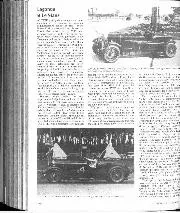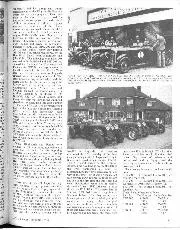

Lagonda at Le Mans
As time goes by there are more and more opportunities to indulge in nostalgic commemorative "jollies" or "raids" as the Frazer Nash owners call them. It was the Frazer Nash section…
orareA,a
OF FRENCH VINTAGE
Sir, As an owner for five years of a 1926 DISS Delage, I was interested to see your
article on old Delages in the May issue.
There are one Or two inaccuracies, however, that I feel I must point out. Firstly there is no difference worth mentioning between the DIS. and the DISS models either in performance or essential mechanical details : the only constant difference being in the make of the dynamotor, Ducellier on the DISS and North-East on the 1)I Secondly,
DIS’s were made in 1925 and in 1927.;28, and DISS’s in late 1925 and 1926. Anyway, it makes no difference what the label Says, it’s the same motor-car. In my experience of about eight various 14 h.p. Delages in assorted con ditions, none of them Would do an honest timed 80 m.p.h. They would do it all right on the speedo, but that instru ment was always very optimistic. The true maximum is about 74 when in good order. Incidentally, if anyone has the old AT speedo fitted, which reads very high, a change to the ordinary” commonor-breaker’s Jaegar will give about an
accurate answer without altering gearing. The easiest way of converting to lowpressure tyres is to use 6.00 x 20’s, the wheels for which were fitted to many later Delages and are to be found in most breakers. This improves road-holding
and braking a great deal, but makes the steering slightly heavier, especially if there is any wear in the king-pins.
The tappet gear is infernally noisy, even after fitting new pins, rollers, etc. However, I have at last found the solution to that. It is difficult to describe in detail, but it consists essentially in grinding a groove for oil inside the cup-shaped rocker end, so that oil squirts down the push-rods in large quantities. It works like a Charm. If anyone is interested, I shall be very pleased to show them how to do it if they will get in touch with me. The chief and constant snag with these motors is clutch-slip. There is never any visible reason for it when you take the clutch down, but new linings and centre plate sometimes effect a cure. I have even fitted twice as many springs, but mine Still slips sometimes. The other real bother is that oil will work up the prop-shaft from the back axle and come out of the universal-joint. I suppose I use a quart every 500 miles. I can find no reason for it on dismantling, so I just put in a quart every 500 miles I I have fitted BHB pistons in mine wit h every success. I don’t like the bi-metal
Zephyrs. They come apart. Aerolites are also very good. In Conclusion, I would like to say that fitting a 36 or 38 mm. S.II. carburetter is to my mind a great improvement. A
K.1 needle in the standard 1)(3in. jet gives the Lest performance and about 23 m.p.g. These old motors are one of the pleasantest to drive that I know, and I wouldn’t change mine for anything, even after
enumerating all the snags. The chief joy is the steering and roadholding. I am, Yours etc.,
GgRALJ) A. EwEN.
Middlesex.